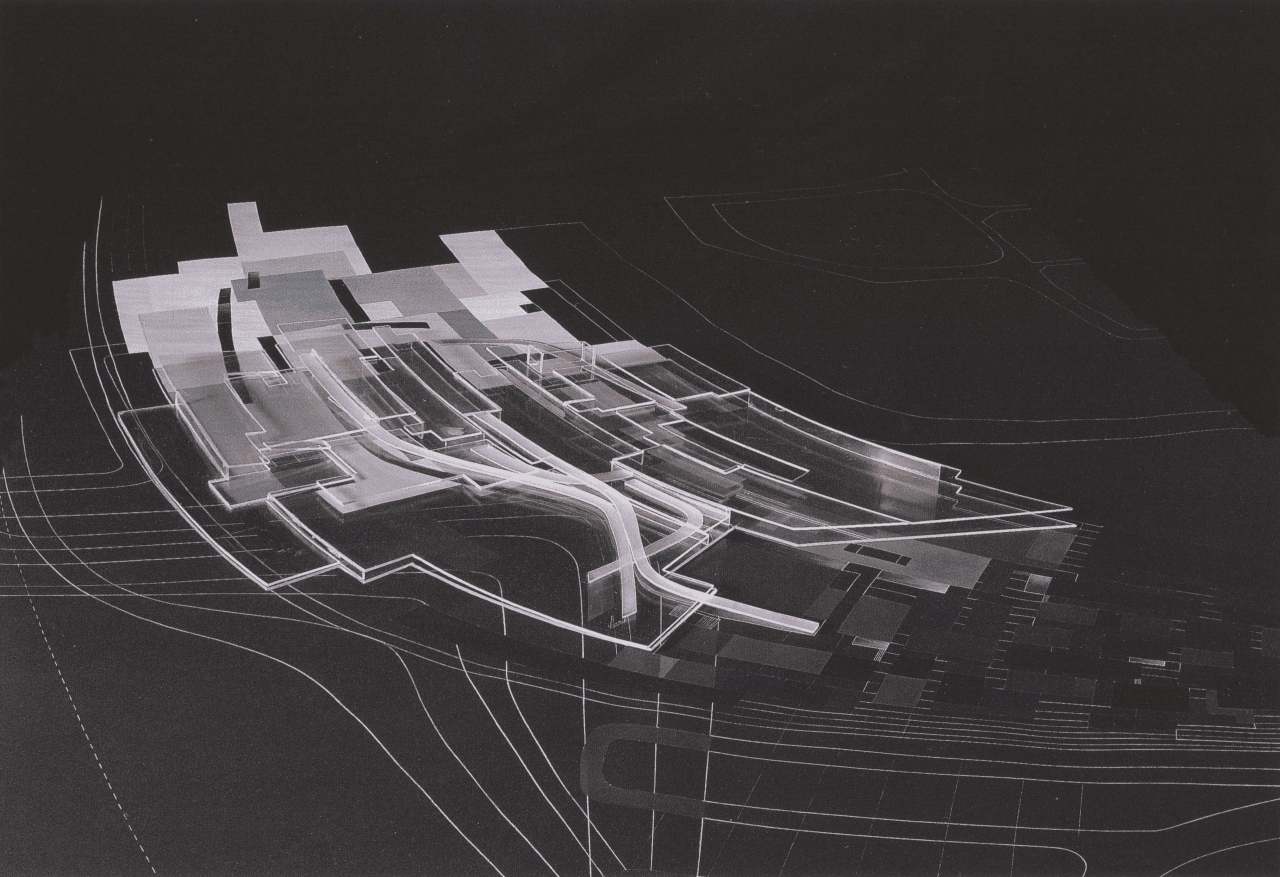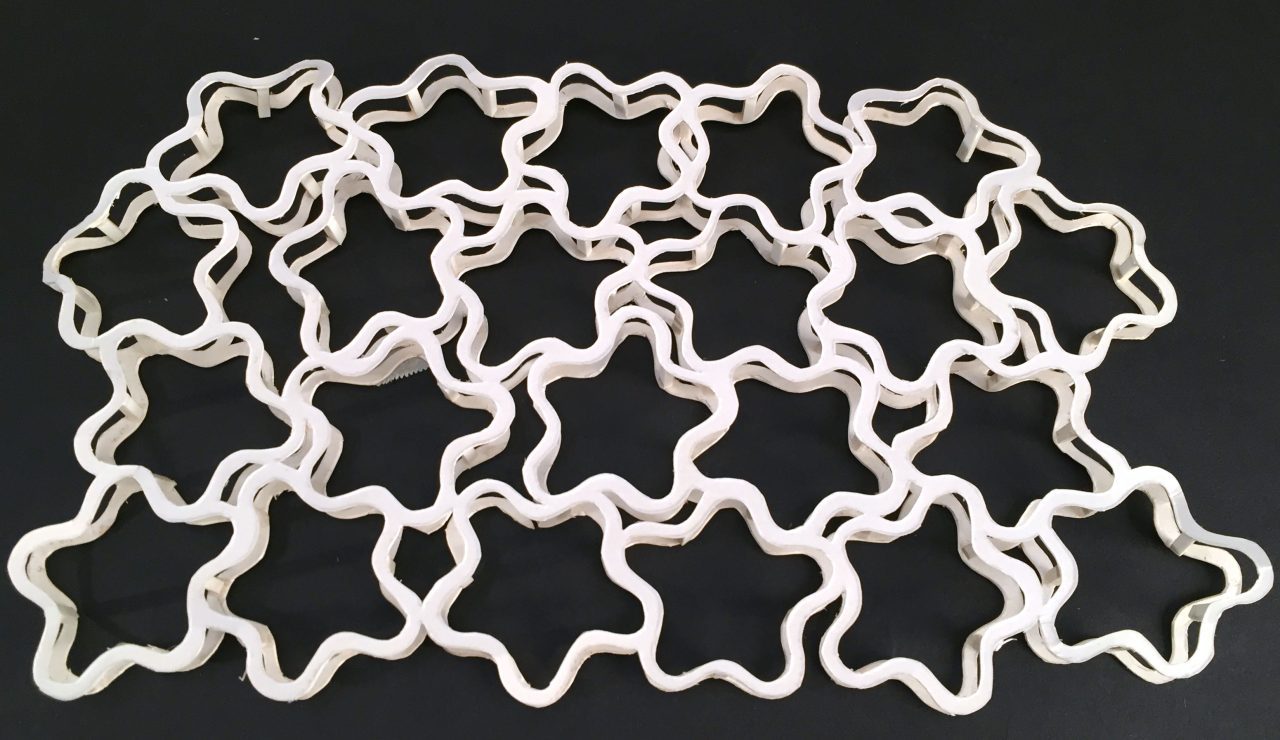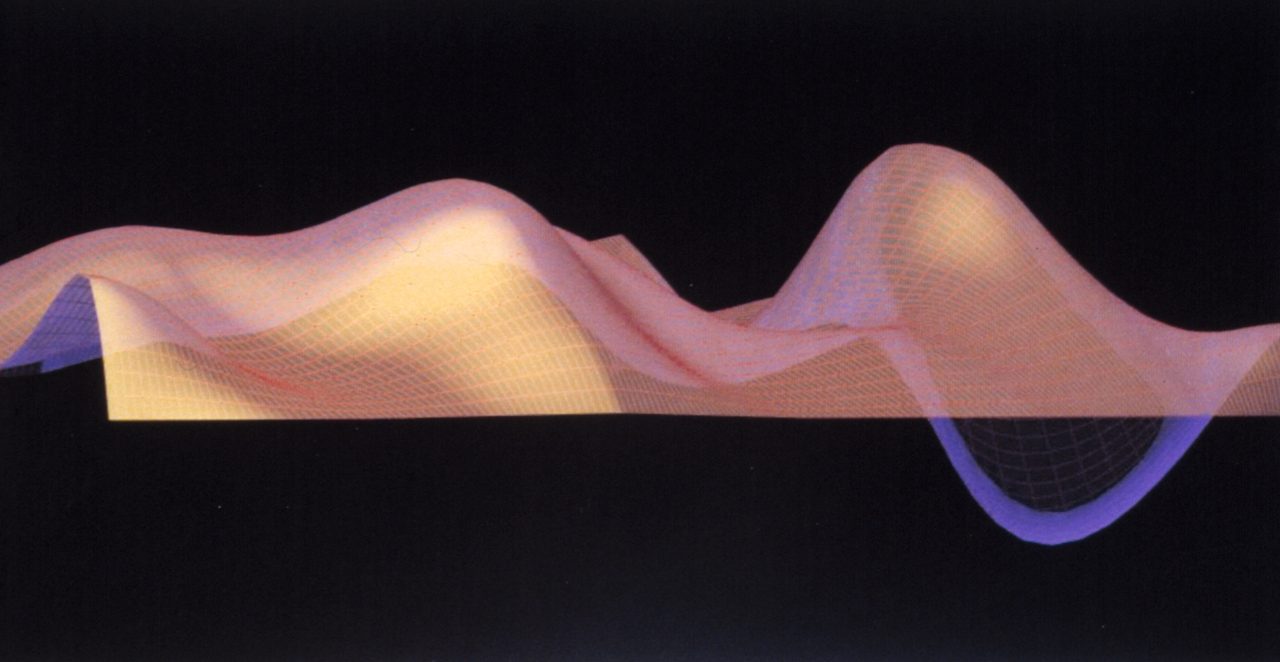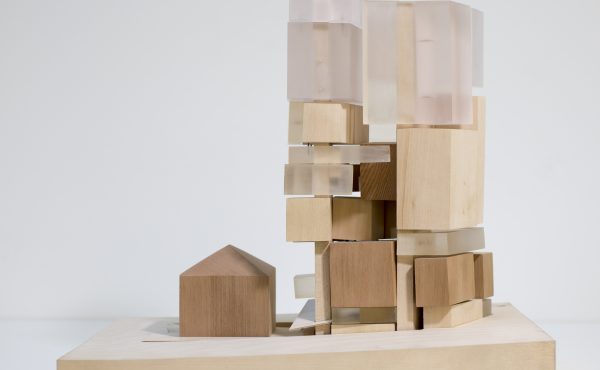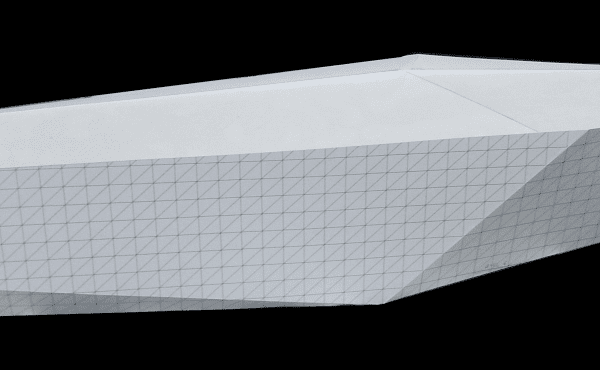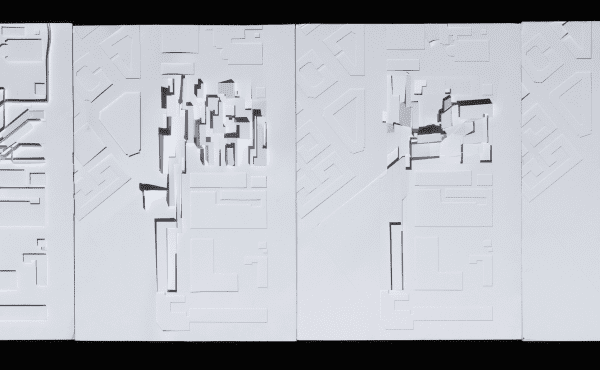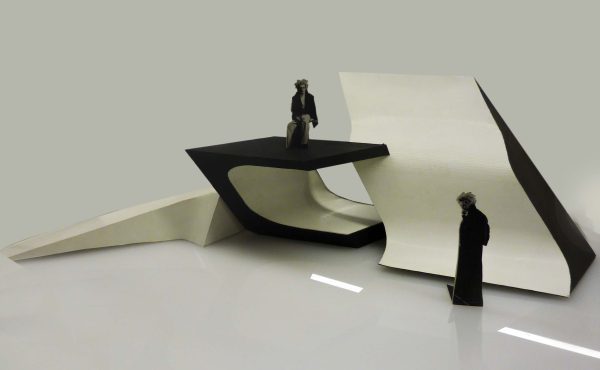Museum of Islamic Art, Doha, Qatar (1997) evidences the development of Zaha Hadid Architects’ Museum design strategies in the late 1990s. They were one of eight invited architectural practices in an international competition, led by the Aga Khan Trust for Culture, to design a public museum to house the Qatari ruling family’s collection of Islamic art. Although ZHA did not win, the Museum of Islamic Art shares its consideration of context and the spatial flexibility required in art museums with built projects such as CAC and MAXXI.
In Landscape interior painting with model, one can see the building’s distinctive curved form, inspired by the dunes of the surrounding landscape and the waves of the sea from the nearby Corniche waterfront. The transparency of the model allows us to view through to the painting below, seeing the interior and site simultaneously. This develops upon the use of multiple viewpoints in ZHA’s earlier paintings, while aiding in a representation of the project’s use of layering and flowing, relative to its context.
The building set out to challenge the Western notion of the museum, with its mosaic-like interior structure, visible in the painting, allowing for the display of a wide-range of Islamic objects of varying scales and materialities. Hadid’s design also included courtyards and a system of ‘slots’ which helped with heat and light levels, serving as a contemporary reinterpretation of the traditional architecture of Doha. Its organisation and form were equally inspired by Islamic patterning, which can be further seen in a card process model.
Architectural Design
Zaha Hadid with Patrik Schumacher and Woody Yao
Design Team
Shumon Basar, Graham Modlen, Markus Dochantschi, Anuschka Kutz, Garin O’Aivazian, Filipe Pereira, Ivan Pajares Sanchez, Wassim Halabi, Ali Mangera, Edgardo Torres, Julie Fisher, Andrew Schachman, Oliver Domeisen, Julie Richards, Irene Huttenrauch and Tia Lindgren
